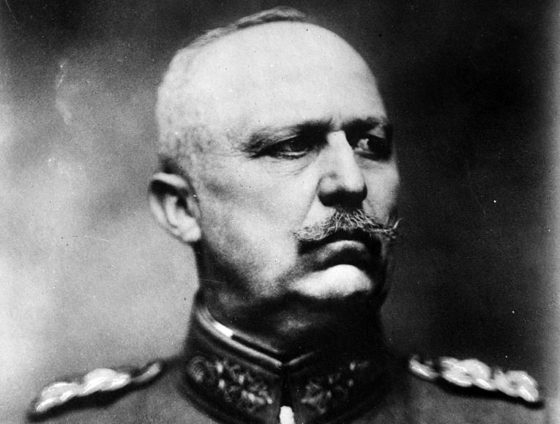
“Although the recapture of the airfields did little to save the Netherlands from defeat, the heroic efforts of the defenders had a lasting effect.”
By John Rust
WHEN HITLER INVADED Denmark on April 9, 1940, it took just hours for German forces to take over the entire country. A month later when it came time to invade the Netherlands, Berlin counted on another quick victory.
One way they planned to achieve this was with one of the largest airborne operations in history. Nearly 12,000 paratroopers – or Fallschirmjager in German – would be dropped in and around the capital of the Hague. The airborne forces would move quickly to secure airfields in the area and then capture Queen Wilhelmina and force her to surrender her country.
It was a simple enough plan, at least on paper. But there was one thing the Germans failed to take into account: the stubborn resistance of the Dutch army.

German paratroopers descended from the sky on May 10, 1940 and immediately seized three airfields in the Hague. This allowed more troops to be flown in to the captured bases to reinforce the units already on the ground.
Although the Germans had taken control of the runways around the capital, they had not completely driven off the Dutch defenders. Counter-attacking from the perimeter of the airfields, the local forces inflicted heavy casualties on the invaders and succeeded in damaging or destroying several transports. Eventually, the runways became so cluttered with wreckage that follow-up planes were forced to put down on any relatively flat surface they came across, causing even more damage and loss.
Later in the day, Dutch commanders cobbled together enough troops from various units for even more assaults. During the fight for the airfield at Ypenburg, Dutch forces consisted of grenadiers, military police, cavalry recruits, and even students from a nearby army academy, many of them using captured German weapons. Despite the ragtag nature of the Dutch formations, they succeeded in pushing the Germans off the airfield.

Local commanders brought even more force to bear in their counter-attack on the Ockenburg airfield. Artillery and bombers supported the ground assault as national troops recaptured the runway, taking 179 Germans prisoner in the process.
Even more artillery, along with antiquated biplanes, was used in the assault on the Valkenburg airfield.
By the end of the day, the assortment of hastily assembled Dutch units defeated some of Germany’s crack troops and took back all three airfields. Their victory would be very short-lived, however. Unable to stem the full might of the German juggernaut, the Netherlands surrendered on May 14, just four days after the invasion began. It would not be until May 5, 1945 that the country would be completely free of Nazi rule.

Although the recapture of the airfields did little to save the Netherlands from defeat, the heroic efforts of the defenders had a considerable and lasting effect. Because of the heavy resistance, the Luftwaffe lost nearly 250 transport planes during the invasion. In fact, the loss of so many aircraft and crews became one of many factors leading to the cancelation of Germany’s planned invasion of England later in 1940, Operation: Sea Lion.
 It also meant fewer transport planes to support Germany’s doomed Operation: Barbarossa, the invasion of the Soviet Union in 1941.
It also meant fewer transport planes to support Germany’s doomed Operation: Barbarossa, the invasion of the Soviet Union in 1941.
ABOUT THE AUTHOR: John Rust is the author of the new book Weird and Interesting Stuff from World War II from which this article was excerpted.










Around 1600 men were captured, of whom 1200 were sent to England just in time. Sadly, many of them perished when the Japanese attacked the Dutch Indies and they were sent to Australia, but their ship, the Von Imhof, was attacked by a Japanese plane and sank.
Another hard blow was the deployment of a trainer company between Dordrecht and Moerdijk on May 11 that suffered heavy casualties, which led to less capacity for training new Fallschirmjager.